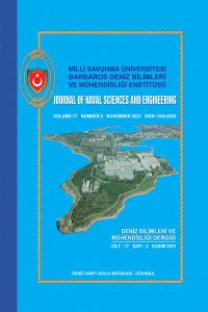Prediction of Vibration Response Caused by Rotating Machinery
Excitation energy of rotating machinery propagates through the connection paths resulting in vibration responses at the structures such as machine foundations. Accurate prediction of these vibration responses at a point of a complex structure, where the operational behavior cannot be measured directly, is an important engineering problem for design optimization, component selection and condition monitoring. The main step of the prediction is to identify the internal forces acting on the connection paths of the machinery. At the circumstances where direct measurement is impossible or impractical due to physical constraints, an indirect approach is to identify the exciting forces based on multiplication of an inverted frequency response functions (FRFs) matrix and a vector of vibration responses measured at the points where the exciting forces are transmitted through. The aim of this paper is to present matrix inversion method to identify the exciting internal forces and hence, predict the vibration response at the point of interest.
___
- [1] Verheij, J. W., (1982), Multipath Sound Transfer from Resiliently Mounted Shipboard Machinery, TNO, Delft, Netherlands.
- [2] Magrans, F. X., (1981), Method of measuring transmission paths, Journal of Sound and Vibration, 74(3), pp. 321-330.
- [3] Ribeiro, A. M. R., Silva, J. M. M., and Maia, N. M. M., (2000), On the generalisation of the transmissibility concept, Mechanical Systems and Signal Processing, 14(1), pp. 29-35.
- [4] Maia, N. M. M., Silva, J. M. M., and Ribeiro, A. M. R., (2001), The transmissibility concept in multi-degree-of-freedom systems, Mechanical Systems and Signal Processing, 15(1), pp. 129-137.
- [5] Ribeiro, A. M. R., Fontul, M., Maia, N. M. M., and Silva, J. M. M., Further developments on the transmissibility concept for multiple degree of freedom systems, Proceedings of the XIth International Conference on Vibration Engineering, Timisoara, Romania, 2005.
- [6] Desanghere, G., Identification of external forces based on frequency response measurements, Proc. 8th Int. Seminar on Modal Analysis, Leuven, Belgium, 1983.
- [7] Roesems, D., Analysis of structure borne noise transmission paths, Proc. 6th Int. Seminar on Modal Analysis, Leuven, Belgium , 1981
- [8] Verheij, J. W., Experimental procedures for quantifying sound paths to the interior of road vehicles, Proc. 2nd Int. Conference on Vehicle Comfort, pp. 483-491, Bologna, Italy, 1992.
- [9] Starkey, J., and Merril, G., (1989), On the ill-conditioned nature of indirect force measurement techniques, Int. Journal of Analytical Experimental Modal Analysis, 4, p. 6.
- [10] Freymann, R., and Stryczek, R., Noise path analysis and optimization, Proc. Unikeller Conference, Zurich, Switzerland 1995.
- [11] Van der Linden, P. J., and Floetke, H., Comparing inverse force identification and the mount stiffness force identification methods for noise contribution analysis, Proc. International Conference on Modal Analysis Noise and Vibration Engineering, pp. 2971-2986, Leuven, Belgium, 2004.
- [12] Mas, P., Sas, P., and Wyckaert, K., Indirect force identification based upon impedance matrix inversion: a study on statistical and deterministical accuracy, Proc. 19th Int. Seminar on Modal Analysis, Leuven, Belgium, 1994.
- [13] Fabunmi, J. A., (1986), Effects of structural modes on vibratory force determination by the pseudoinverse technique, AIAA Journal, 24(3), pp. 504-509.
- [14] Thite, A. N., and Thompson, D. J., (2006), Selection of response measurement locations to improve inverse force determination, Applied Acoustics, 67(8), pp. 797-818.
- [15] Hendrickx, W., Accurate vehicle FRF measurements for indirect force determination based upon matrix inversion, Proc. 19th Int. Seminar on Modal Analysis, pp. 1037-1048, Leuven, Belgium, 1994.
- [16] Thite, A. N., and Thompson, D. J., (2003), The quantification of structure-borne transmission paths by inverse methods. Part 1: Improved singular value rejection methods, Journal of Sound and Vibration, 264(2), pp. 411-431.
- [17] Thite, A. N., and Thompson, D. J., (2003), The quantification of structure-borne transmission paths by inverse methods. Part 2: Use of regularization techniques, Journal of Sound and Vibration, 264(2), pp. 433-451.
- [18] Choi, H. G., Thite, A. N., and Thompson, D. J., (2006), A threshold for the use of Tikhonov regularization in inverse force determination, Applied Acoustics, 67(7), pp. 700-719.
- [19] Verheij, J. W., (1997), Inverse and reciprocity methods for machinery noise source characterization and sound path quantification. Part 2: transmission paths, Int. Journal of Acoustics and Vibration, 2(3), p. 10.
- [20] Verheij, J. W., (1997), Inverse and reciprocity methods for machinery noise source characterization and sound path quantification. Part 1: Sources, Int. Journal of Acoustics and Vibration, 2(1), p. 10.
- [21] W. Biermayer, F. B., R. Höldrich, A. Sontacci, S. Brandl, W. Fliesser, (2007), Sound Engineering based on Source Contributions and Transfer Path Results, Journal of Society of Automative Engineers of Japan.
- [22] Janssens, M. H. A., and Verheij, J. W., (2000), A pseudo-forces methodology to be used in characterization of structure-borne sound sources, Applied Acoustics, 61(3), pp. 285-308.
- [23] Knapen, P. L., (1999), Transfer Path Analysis related to Booming, performed on a car," No. 99-018, 52233/99-0125, Eindhoven University of Technology, Eindhoven, Netherlands.
- ISSN: 1304-2025
- Yayın Aralığı: 2
- Başlangıç: 2003
- Yayıncı: Milli Savunma Üniversitesi Deniz Harp Okulu Dekanlığı
